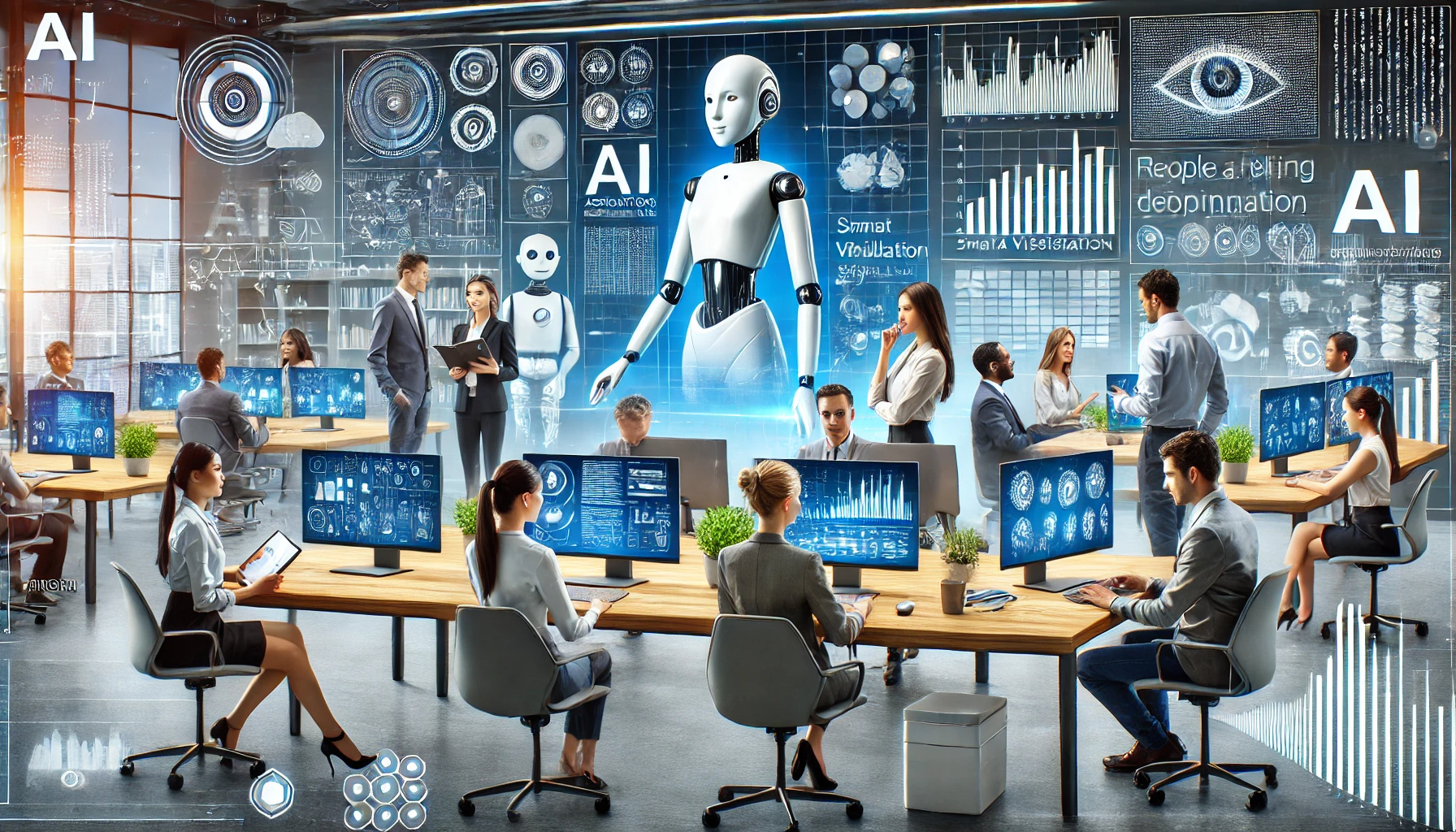Leveraging AI at Work: How to Make Artificial Intelligence Work for You
In today's dynamic world, it's rare for anyone to go a day without hearing talk about artificial intelligence. Whether it's a discussion about its rising potential or perhaps more skeptical opinions, there's no denying that artificial intelligence has contributed to major changes across the globe. However, most people's knowledge of this emerging technology is purely based on what they've heard or read in science fiction novels.
In fact, despite AI drastically changing how we work and many businesses focusing on optimizing their operations using this technology, only 20% of frontline workers are said to have interacted with it. These low numbers are primarily caused by the general pessimistic views attached to AI. Little do they know that they can leverage it to work better and more productively.
The Role of AI in the Workplace
AI's role in the workplace is clear it automates mundane and repetitive tasks to free up employee time. That way, human employees can focus more on tasks that require genuine human creativity and critical thinking abilities. But that's not how many employees see it, especially with reports revealing that AI and automation could result in the loss of over 300 million jobs across the world.
Nonetheless, the truth is that AI is not all about replacing employees and automating tasks. Contrary to popular notions, AI is primarily designed to work with humans and make them more productive. That's why anyone in the workplace should train and learn how to use it for their benefit. how to create an AI agent can be a valuable step toward maximizing efficiency. Here are a few ways to use AI for a more efficient and productive workflow.
a. Managing Data and Retrieving Information
As a customer support agent, you probably answer tons of repetitive questions, especially in demanding markets like the online casino industry. In this case, answering questions on bonuses, payment options, withdrawals, and game variety almost ten times a day is inevitable. But what if we tell you that AI can help?
Leveraging conversational AI chatbots will ensure that everyone gets timely responses whenever they need them, leaving you free to tackle more complex issues. The best part is that online casinos are famous for using AI.
Be it to answer customer queries or to analyze customer data and behavior for a more personalized experience, AI's is extensively used in top online casino sites. So, whenever you visit an online casino and find your favorite titles or exclusive bonuses among the recommendations, just know AI has customized your gameplay for an optimum experience.
b. Prioritizing and Replying to Emails
We all know how time-consuming replying to emails can be, especially in a business context. You have to talk to suppliers, answer customer inquiries, and even take care of internal communications. Rather than spending hours crafting responses, why not use AI and complete this crucial business task in record time daily?
Artificial intelligence and AI-based task management tools aid in prioritizing messages, drafting easy-to-understand responses, and scheduling meetings, among other routine tasks. That way, all your communications will be addressed promptly, letting you handle more strategic tasks and become more productive in general.
c. Transcribing and Language Translation
Another common task at the workplace is writing down and translating documents, minutes, or even research findings. Thankfully, some AI tools, like Whisper, come with smart technology that instantly translates text and writes down spoken words. All you need to do is feed data to the tool, and it will process it and provide what you need.
On the other hand, if you need to summarize a book or document, AI tools also use optical character recognition (OCR) technology that enables them to read scanned pages, PDSs, and everything in between. In fact, some options like Nanonet allow you to upload the book or document, and then break it down into easy-to-digest pieces. That way, you can extract the information you need with ease.
d. Code Generation and Programming Responsibilities
If you thought AI could only complete simple and routine tasks, then think again. AI can also tackle complex tasks like generating code and solving programming challenges. That's right! Tools like GitHub Copilot serve as an assistant that many programmers never knew they needed.
Thanks to their large language models (LLMs), these tools can understand context, common coding patterns, as well as programming languages. Thus, besides suggesting function generation and code completions, these tools can also handle documentation writing, boilerplate code creation, bug detection, automated code review, and performance optimization recommendations.
Nonetheless, it's worth mentioning that while AI can handle code generation and programming tasks, developers still need to go through such codes to ensure their accuracy and effective use.
Potential Risks When Using AI at the Workplace
We've already seen a few benefits of using AI in the workplace. Likewise, there are a few caveats that freelancers and employees should be aware of while using it. These include ethical considerations when using publicly available yet copyrighted information, the dire need for the human touch when it comes to AI-generated output, as well as the high chance of receiving inaccurate facts from AI models.
These are just a few of the downsides of using AI at work. Luckily, the advantages far outweigh the downsides. So, don't fear using AI at work. In fact, AI is quickly becoming an essential tool for any business looking to keep up with the competition and save costs on operations.
That said, embrace this powerful and versatile tool to learn how it can help you clear up your time and focus on more important tasks. As a result, you'll be in a better position to take advantage of opportunities in 2024 and beyond.









